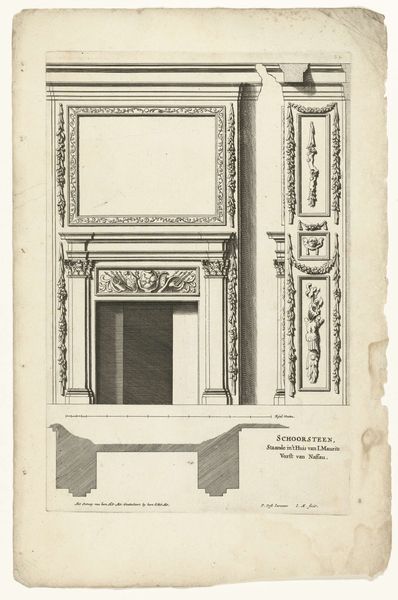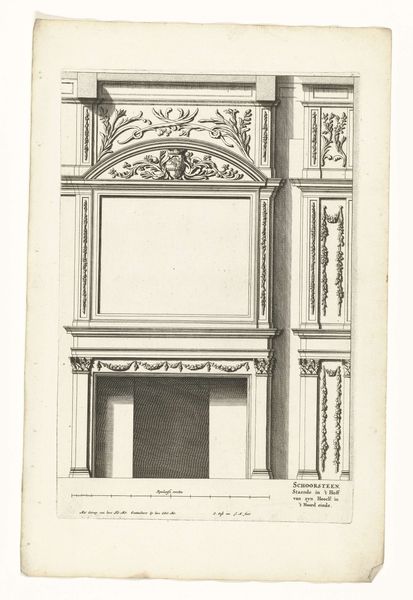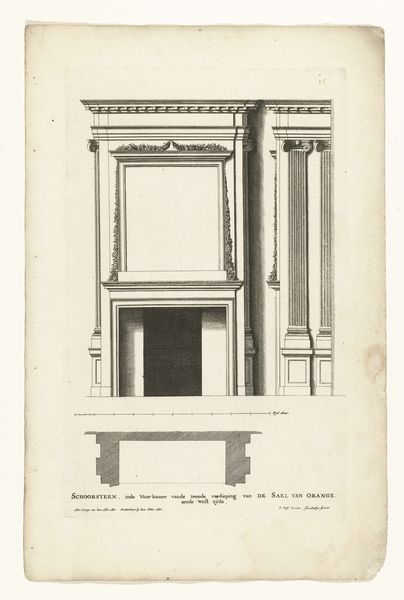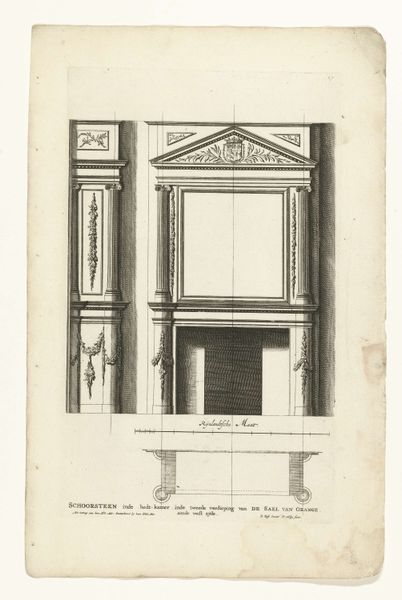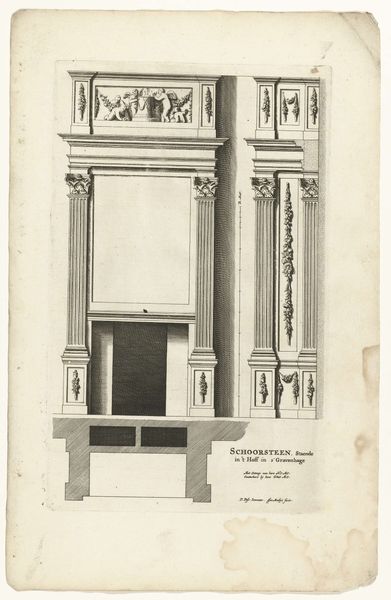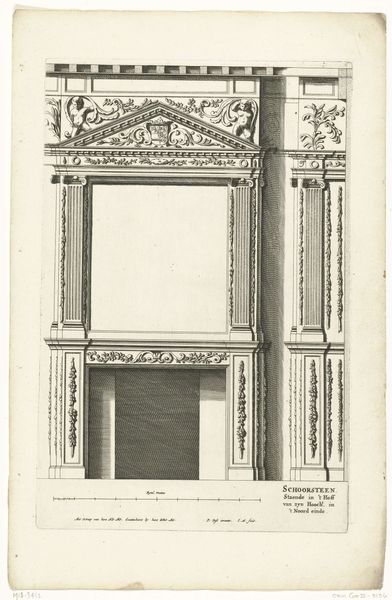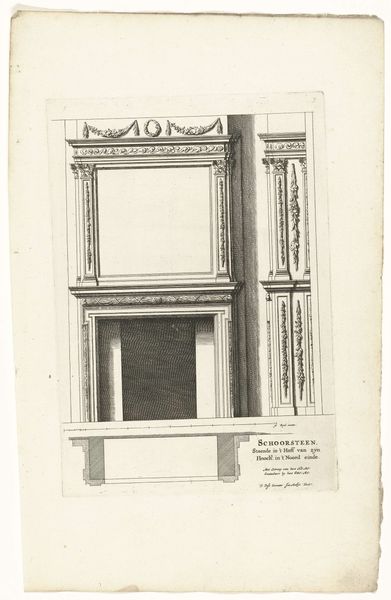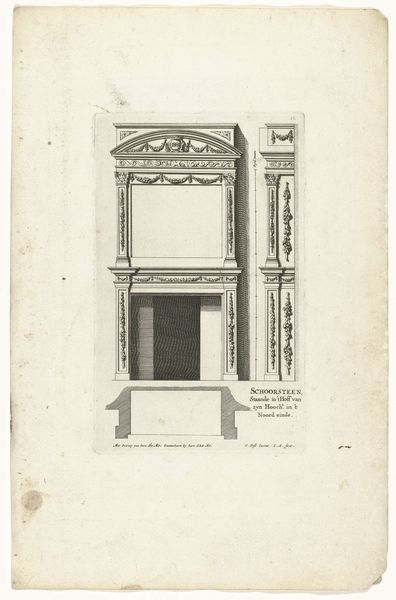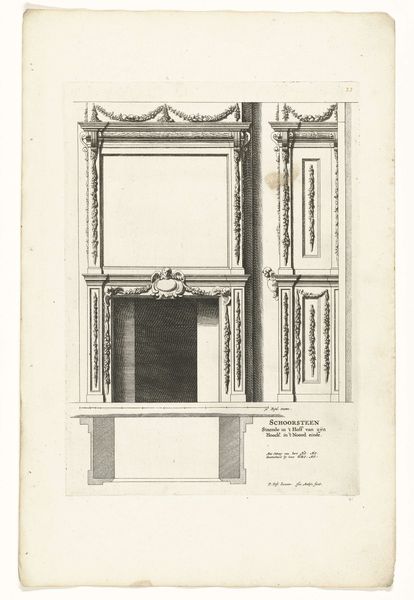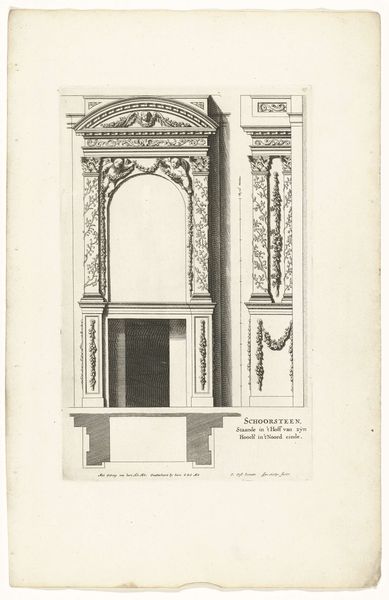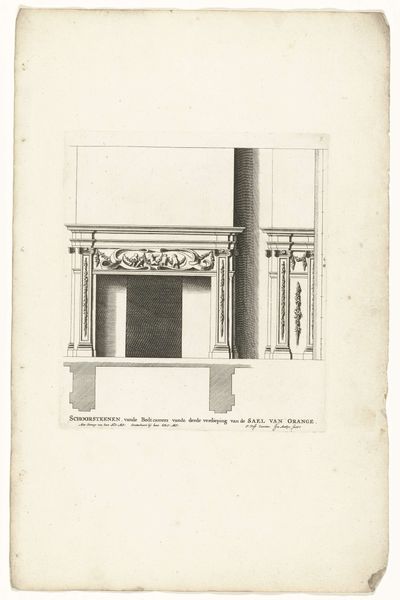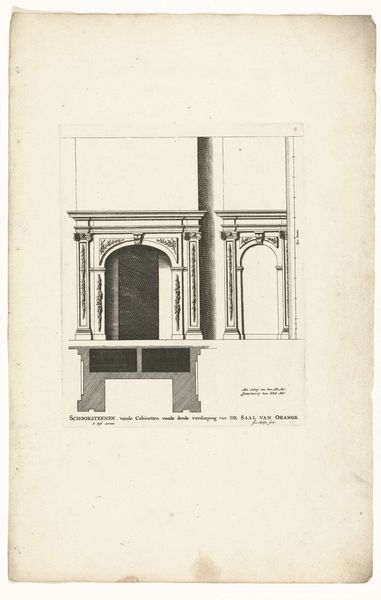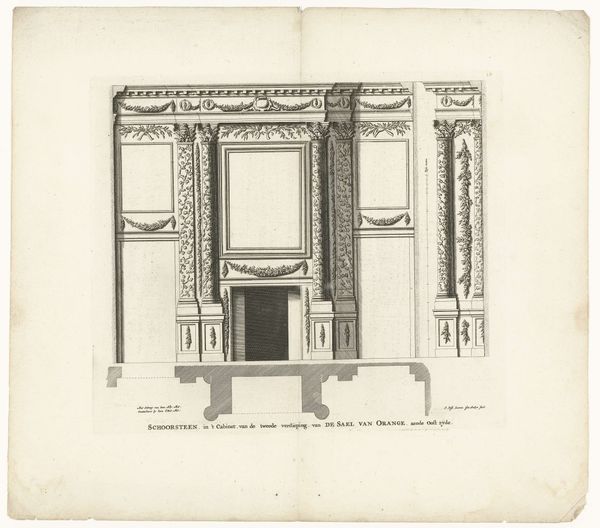
drawing, graphic-art, print, engraving, architecture
#
drawing
#
graphic-art
#
baroque
# print
#
geometric
#
line
#
history-painting
#
academic-art
#
engraving
#
architecture
Dimensions: height 287 mm, width 188 mm
Copyright: Rijks Museum: Open Domain
Curator: This print, titled "Onderboezem in het Mauritshuis," an engraving from 1664 by Jan Matthysz., showcases architectural details. Editor: My first impression? Austere elegance. The linear precision renders depth with what looks like the simplicity of gray ink, yet creates such visual interest—especially with those curious figures flanking the fireplace. Curator: It’s fascinating how prints like these served practical purposes. Architectural designs were disseminated through engravings, allowing craftsmen to reproduce these features across various settings. Notice the geometrical layout combined with Baroque ornamental detailing, almost like a blueprint meeting a fashion magazine. Editor: Yes! It makes me think about how much artistic labor and material wealth would have gone into just *imagining* a fireplace like that, and then all the craft involved in rendering it into reality! Imagine the masons studying this print. It’s lovely to consider the exchange between image, artisan, and object, with us considering it now! It also brings to mind the power of interiors, this being like a stage design of status, warmth, and aspiration. Curator: Precisely. This aesthetic didn't arise in a vacuum; it reflects societal structures of its time. It embodies wealth display in seventeenth-century Dutch architecture, using precise engravings as guides for skilled craftsmen. Materials like marble, or what it evokes visually here, signaled very clear markers of class. Editor: True. Thinking about the actual function of this fireplace too… the contrast is interesting, the mechanics of burning fuel for warmth enclosed by cool classical ornamentation. Curator: Definitely. Prints democratized knowledge and design, however they simultaneously re-affirmed societal stratification through commissioned luxury items. The "Onderboezem," more than just graphic art, represents a node in networks of labor, value, and aesthetic ideals. Editor: It feels quite poignant now, the idea of looking at such specific historical images of decor, how little pieces of art influence not just the visual of homes but our understanding of class. Curator: Yes, quite the material echo of histories we inherit, even today.
Comments
No comments
Be the first to comment and join the conversation on the ultimate creative platform.

